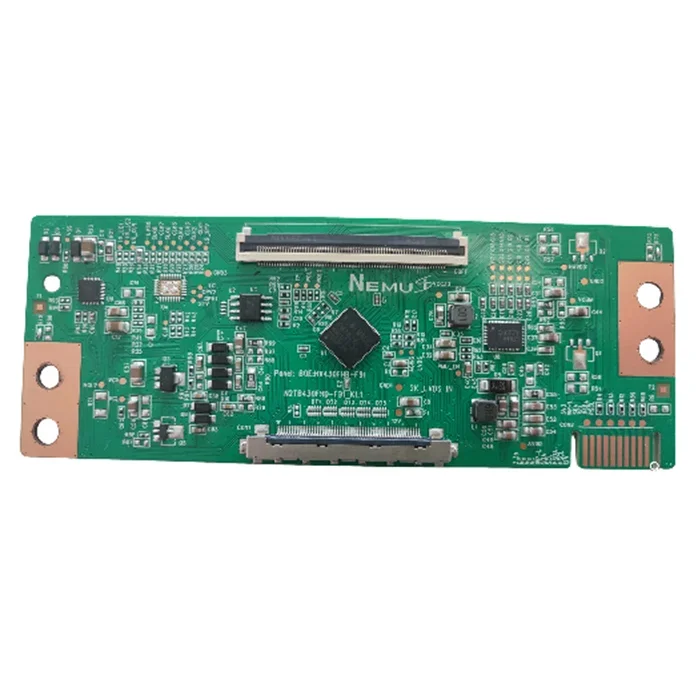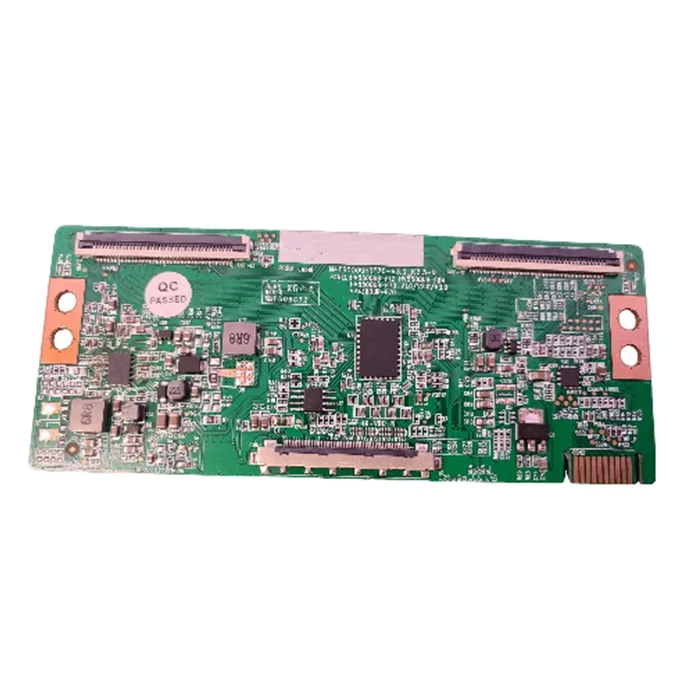LCD screens have become an integral part of modern technology, from smartphones to televisions and computer monitors. Behind the vibrant display lies a crucial component known as the LCD logic board. This circuit board plays a fundamental role in controlling the display functions of an LCD screen. In this blog post, we will explore how the LCD logic board functions and the key aspects of its operation.
I. Understanding the LCD Logic Board
What is the LCD Logic Board?
The LCD logic board, also referred to as the driver board or controller board, is a circuit board responsible for converting electrical signals into visual output on the LCD screen. It acts as the brain of the display, coordinating and controlling the various functions necessary for the screen to operate correctly.
Components of the LCD Logic Board:
The LCD logic board consists of several essential components, including microcontrollers, integrated circuits (ICs), and connectors. These components work together to process and transmit signals to the LCD panel, enabling the display to function.

II. Signal Processing and Conversion
Receiving Input Signals:
The LCD logic board receives input signals from the device it is connected to, such as a computer or a video source. These signals may be in the form of analog or digital data, depending on the type of LCD screen and the signal source.
Signal Processing:
Once the input signals are received, the LCD logic board processes the data to ensure compatibility with the LCD panel. It performs various functions, such as scaling, color correction, and synchronization, to prepare the signals for display on the screen.
Signal Conversion:
After processing, the LCD logic board converts the signals into a format that the LCD panel can understand. This conversion involves transforming the processed signals into a specific voltage or current level that corresponds to the desired display output.
III. Display Control and Timing
Display Control Signals:
The LCD logic board generates control signals that determine how the LCD panel operates. These signals include the horizontal and vertical synchronization signals, pixel clock, and control signals for backlighting. The control signals ensure that the LCD panel displays the image correctly, with the appropriate timing and synchronization.
Timing Control:
The LCD logic board precisely controls the timing of the display functions. It ensures that each pixel on the screen receives the correct voltage or current at the right time to produce the desired image. Timing control is crucial to prevent artifacts such as ghosting or motion blur.

IV. Backlight Control
Backlighting Function:
LCD screens require a backlight to illuminate the display and make the images visible. The LCD logic board is responsible for controlling the backlighting function. It generates signals to regulate the brightness level of the backlight and may include additional features such as dimming or dynamic backlight control.
Energy Efficiency:
Efficient backlight control is essential for energy-saving purposes. The LCD logic board can adjust the backlight brightness dynamically based on the content being displayed, resulting in energy savings and improved battery life for devices such as smartphones and laptops.
V. Communication with External Devices
Interface Connectivity:
The LCD logic board incorporates various interfaces to communicate with external devices. Common interfaces include HDMI, DisplayPort, VGA, and DVI. These interfaces allow the LCD screen to receive signals from different sources and display the content accordingly.
Compatibility and Resolution:
The LCD logic board ensures compatibility between the external device and the LCD panel. It supports different resolutions and refresh rates, ensuring that the display output matches the capabilities of the LCD screen.

Conclusion
The LCD logic board plays a critical role in controlling the display functions of an LCD screen. Through signal processing, conversion, and timing control, it transforms input signals into visual output on the LCD panel. Additionally, the LCD logic board manages backlight control and communicates with external devices to ensure compatibility and optimal display performance. Understanding the functions and operation of the LCD logic board helps us appreciate the complexity behind the seamless and vibrant display we see in modern LCD screens.
Shenzhen Linked-Z Intelligent Display Technology Co., Ltd. is an innovative technology company focusing on TV Mother board, projectors, MINILEDs, monitors and commercial display solutions, and is committed to providing customers with high-quality, high-performance display products and solutions.
If you are interested in our products,welcome to contact us.
Email:liyoubin@linked-z.com





